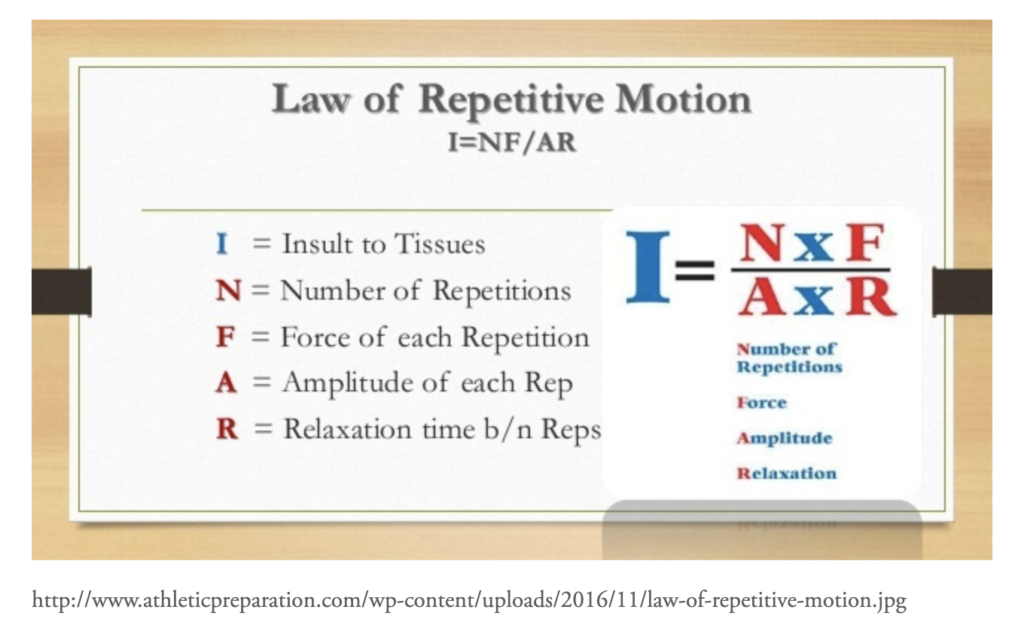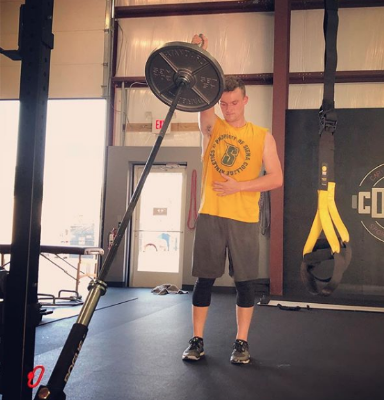No one has ever gotten weaker from bench pressing, barbell overhead pressing, or back squatting. But many have been injured and have experienced setbacks from incorrectly performing or programming these lifts. When training with these exercises, an injury is most likely to occur for at least one of these four reasons:
- Incorrect Technique
- Poor Mobility
- Too Much Volume in the Gym (Too many sets & reps)
- Too Much Volume from Activities Outside of the Gym
The goal of this article is to educate you on why the overhead athlete is more susceptible to encounter injury from bench pressing, barbell overhead pressing, and back squatting. Once you understand the reasoning for avoiding these exercises, we’ll cover three exercises you should be performing instead that’ll allow you to train similar muscles, while keeping your joints in safer positions.
Minimize Stress, Minimize Risk
For the sake of this article, we’re going to use a baseball player as an example. But volleyball players, tennis players, swimmers, and other overhead athletes should abide by the same rules. You must understand that you’ll be stressing your shoulders at higher volumes when playing your sport, and the last thing you want to do is place them under the same stress with high loads for many sets and reps when in the gym. Take a look at the similarities between common injuries from barbell bench pressing and common shoulder injuries for baseball pitchers.
Barbell overhead pressing and back squatting would also show similar injuries to the list above. If you take anything away from this article, it should be that you need to minimize the amount of stress that’s being placed on the shoulder joint, both outside and inside the gym—and inside the gym is where you’re going to have the most control to do so. When you minimize the stress, you minimize the risk.
How can you now minimize the stress on the shoulder and thus minimize the risk of injury?
You need to look closely at two variables: shoulder mobility and the accumulation of stress on the shoulder occurring both in and out of the gym.
Poor Mobility
The substitutions that you’ll see below for the traditional barbell lifts are made in part because they make the lifts safer for those who lack the requisite mobility to perform them. The trouble comes into play for the overhead athlete when the mobility they’re lacking causes another area of the body to “pick up the slack” when playing their sport, resulting in too much stress on the shoulder joint.
Here is a video that walks you through a few exercises to help improve your overhead shoulder mobility.
Minimizing Repetitive Stress
In order to gain a better appreciation for minimizing repetitive stress, it’s beneficial to learn about the law of repetitive motion.

If you can effectively mange the “I” in the graphic above, you’ll do a good job at mitigating injury. The body doesn’t separate the stress occurred while throwing vs. stress occurred while lifting. Insult to specific tissues is insult to those specific tissues. When someone’s shoulder is experiencing high amounts of stress, like a baseball player, the gym needs to be a place where you learn to remove insult to that area, instead of giving it more. This can be done in a variety of ways:
- Smarter exercise selection
- Managing volume (sets x reps) in the gym
- Increasing mobility and learning to move better
- Better postural awareness outside of the gym
- Soft tissue work
- Educating athletes above adequate recovery between throwing and between training sessions.
Smarter Exercise Selection – Modifying Traditional Barbell Lifts
Landmine Press Instead of Barbell Overhead Press
Floor Press Instead of Barbell Bench Press
Front Squat Instead of Back Squat
Horizontal Rowing Variations Instead of Pull-Ups
About the Author

Mike Sirani is the Co-Owner of Capital District Sport and Fitness in Round Lake, NY. He’s an experienced strength and conditioning coach and massage therapist who has spent the majority of his career in Boston training professional, collegiate, and high school athletes of various sports, as well as helping general fitness clients of all backgrounds learn to move better and get stronger than ever before. He earned his Bachelor of Science Degree in Applied Exercise Science, with a concentration in Sports Performance, from Springfield College and completed a highly sought after six-month internship at Cressey Sports Performance. Mike specializes in teaching athletes and general fitness clients to get the most out of their bodies by enhancing their movement quality and creating exercises programs that allow you to get stronger, faster, and more powerful in a safe and effective manner.

